A glass sphere of radius 2R, refractive index n has a spherical cavity of radius R, concentric with it. A black spot on the inner surface of the hollow sphere is viewed from the left as well as right. Obtain the shift in position of the object.
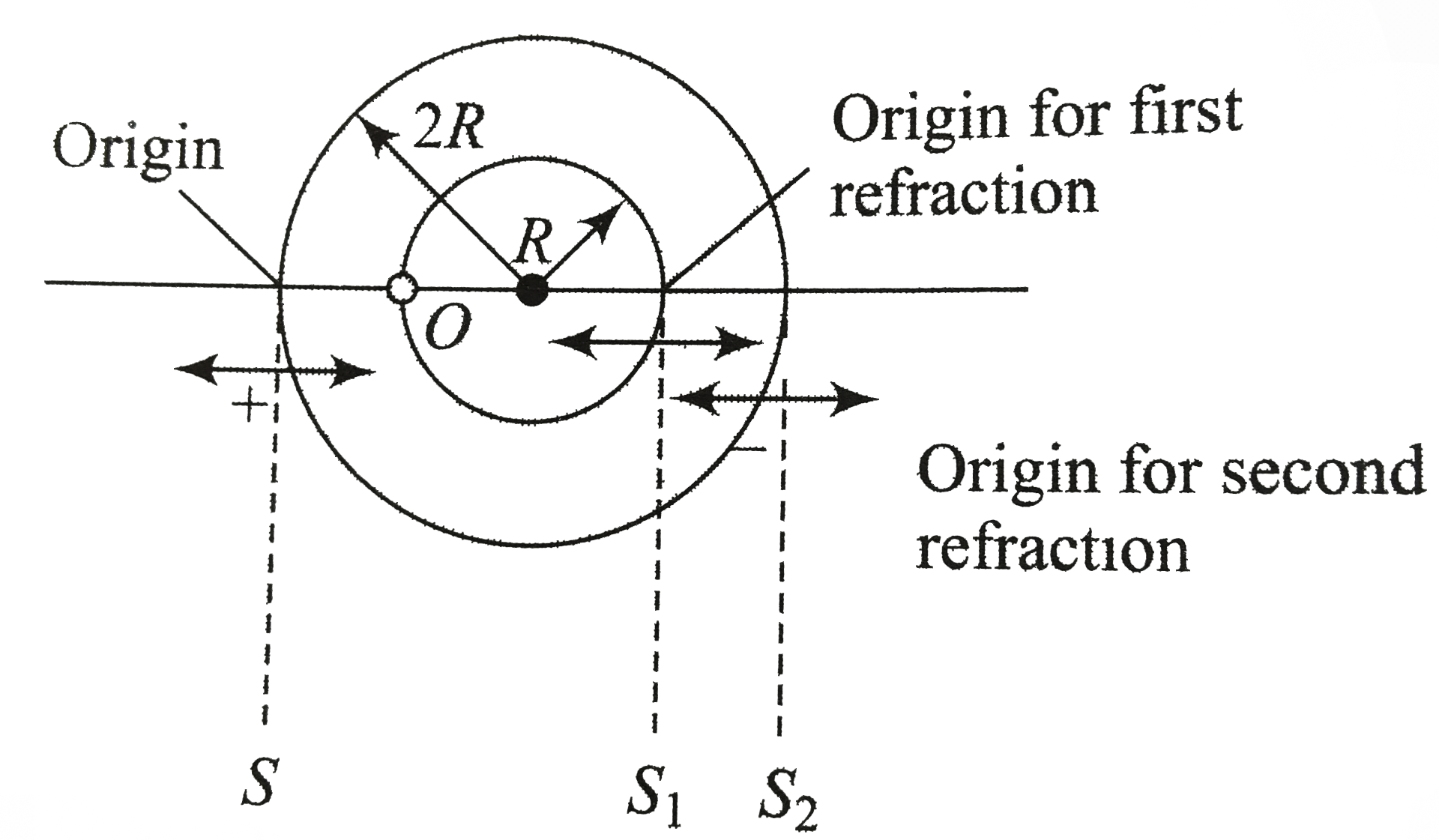
a. Viewer on the left of hollow sphere: Single refraction takes place at surface S.
From the single surface refraction equation, we have
μ2=1,μ1=n,u=−R,andR=−2R
1v−n(−R)=(1−n)(−2R)
which on solving for v yields, v=−(2Rn+1)
Image is on the right of refracting surface S.
Shift= Real depth-Apparent depth
R−(2Rn+1)=(n−1)(n+1)R
b. When the viewer is on the right, two rerfractions take place at surfaces S1 and S2.
μ2=n,μ1=1,u=−2R,andR=−R
For refraction at surface S1:nv1−1(−2R)=(n−1)(−R)
which on solving for v1=−2nR2n−1 .
The first lies to the left of S1 and acts as object for refraction at the second surface. We have to shift the origin of cartesian coordinate system to the vertex of S2. The object distance for the second surface is
u2=−[2nr2n−1+R]=−(4n−12n−1)R
Here μ2=1,μ1=n,R=−2R
⇒1v2−n−[4n−12n−1]R=1−n−2R
On solving for v2 , we get v2=−2(4n−1)(3n−1)R
The minus sign shows that image is virtual and lies to the left of S2 .
Shift= Real depth-Apparent depth
=3R−2(4n−1)R(3n−1)
=(n−1)(3n−1)R

Topper's Solved these Questions
- GEOMETRICAL OPTICSBook:CENGAGE PHYSICSChapter:GEOMETRICAL OPTICSExercise:Solved Examples
Explore 15 Videos
- GEOMETRICAL OPTICSBook:CENGAGE PHYSICSChapter:GEOMETRICAL OPTICSExercise:Exercise1.1
Explore 14 Videos
- FRICTIONBook:CENGAGE PHYSICSChapter:FRICTIONExercise:QUESTION BANK
Explore 1 Video
- GRAVITATIONBook:CENGAGE PHYSICSChapter:GRAVITATIONExercise:Question Bank
Explore 39 Videos
Similar Questions
A glass sphere of radius 2R and refractive index n has a spherical cavity of radius R, concentric with it.
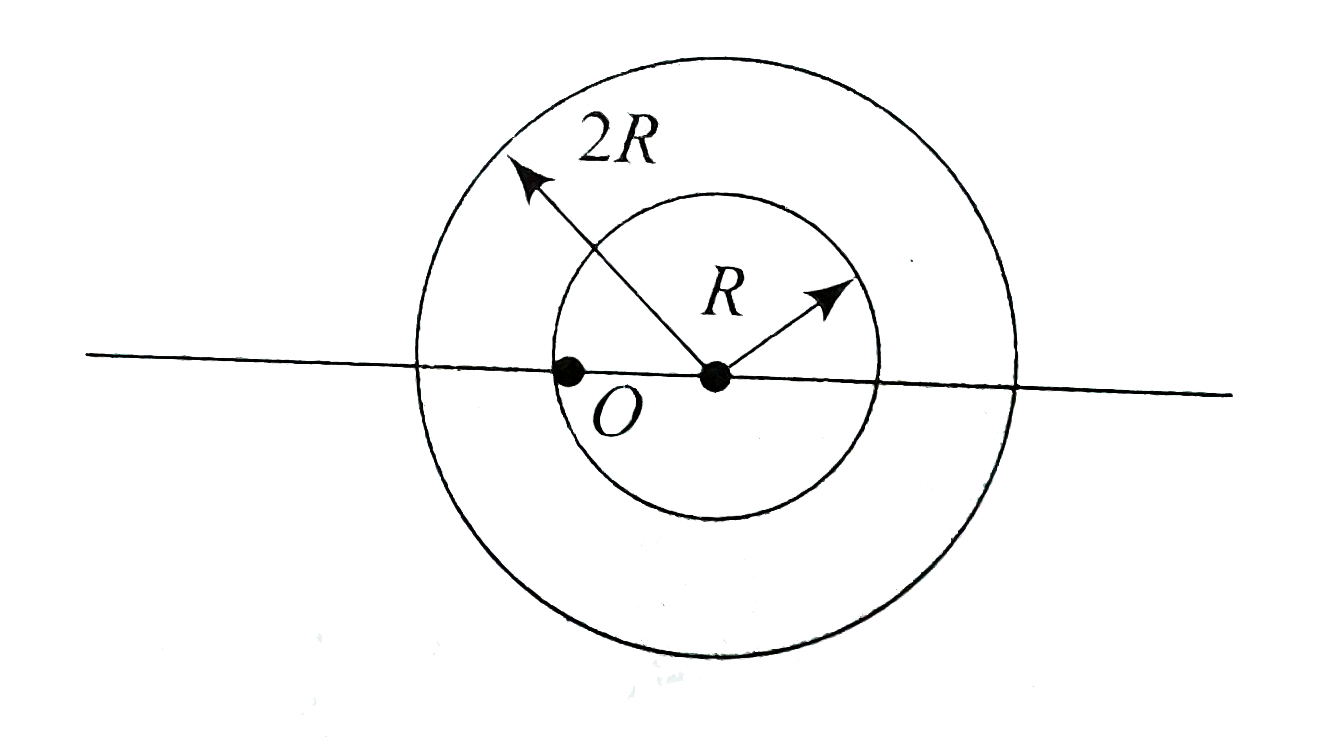
Q. When viewer is ono left side of the hollow sphere, what will be the shift in position of the object?
View SolutionA glass sphere of radius 2R and refractive index n has a spherical cavity of radius R, concentric with it.
Q. When viewer is on right side of the hollow sphere, what will be apparent change in position of the object?
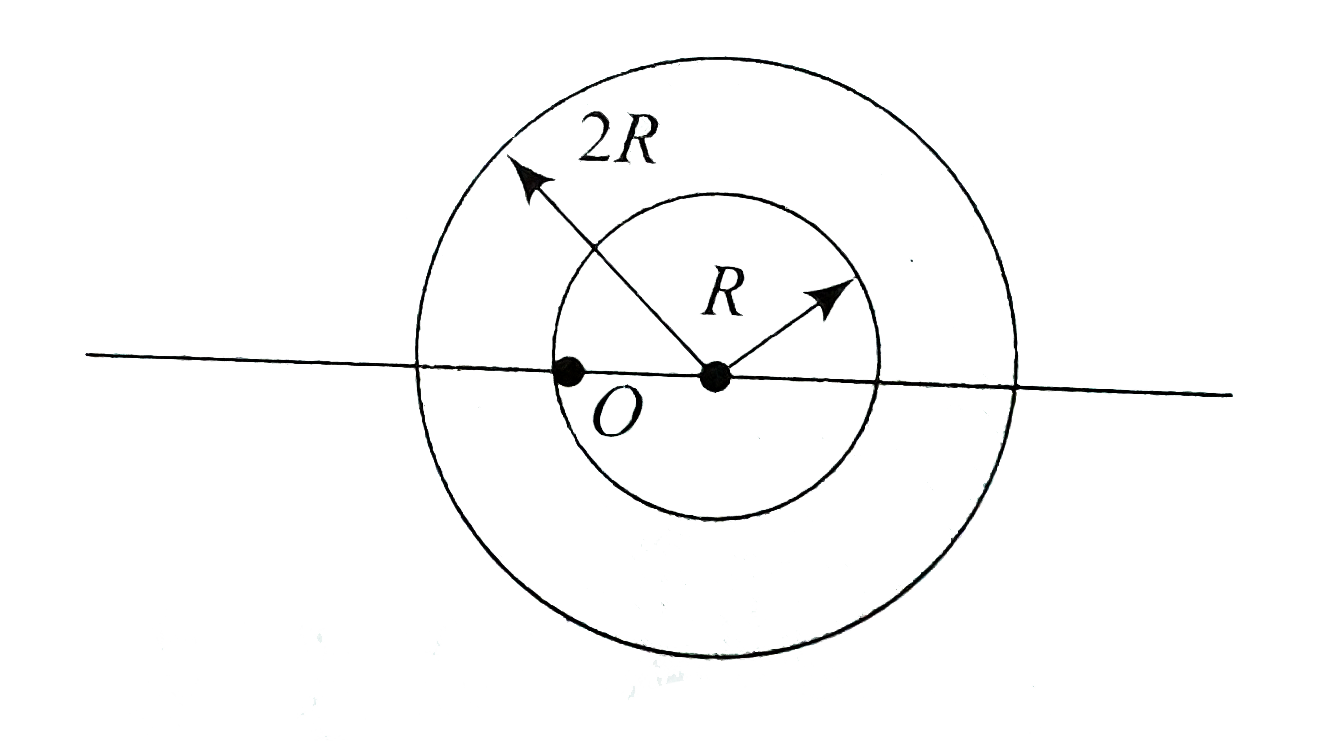
View Solution
Knowledge Check
A glass sphere of radius 2R and refractive index n has a spherical cavity of radius R, concentric with it.

Q. When viewer is ono left side of the hollow sphere, what will be the shift in position of the object?A(n+1)(n−1)R,rightB(n−1)(n+1)R,rightC(2n−1)(2n+1)R,leftD2(n−1)(n+1)R,leftA glass sphere of radius 2R and refractive index n has a spherical cavity of radius R, concentric with it.

Q. When viewer is on right side of the hollow sphere, what will be apparent change in position of the object?A(n−1)(3n+1)R,towards leftB(n+1)(3n−1)R,towards leftC(n+1)(3n+1)R,towards rightD(n−1)(3n+1)R,towards rightA glass sphere, refractive index 1.5 and radius 10cm, has a spherical cavity of radius 5cm concentric with it. A narrow beam of parallel light is directed into the sphere. Find the final image and its nature.
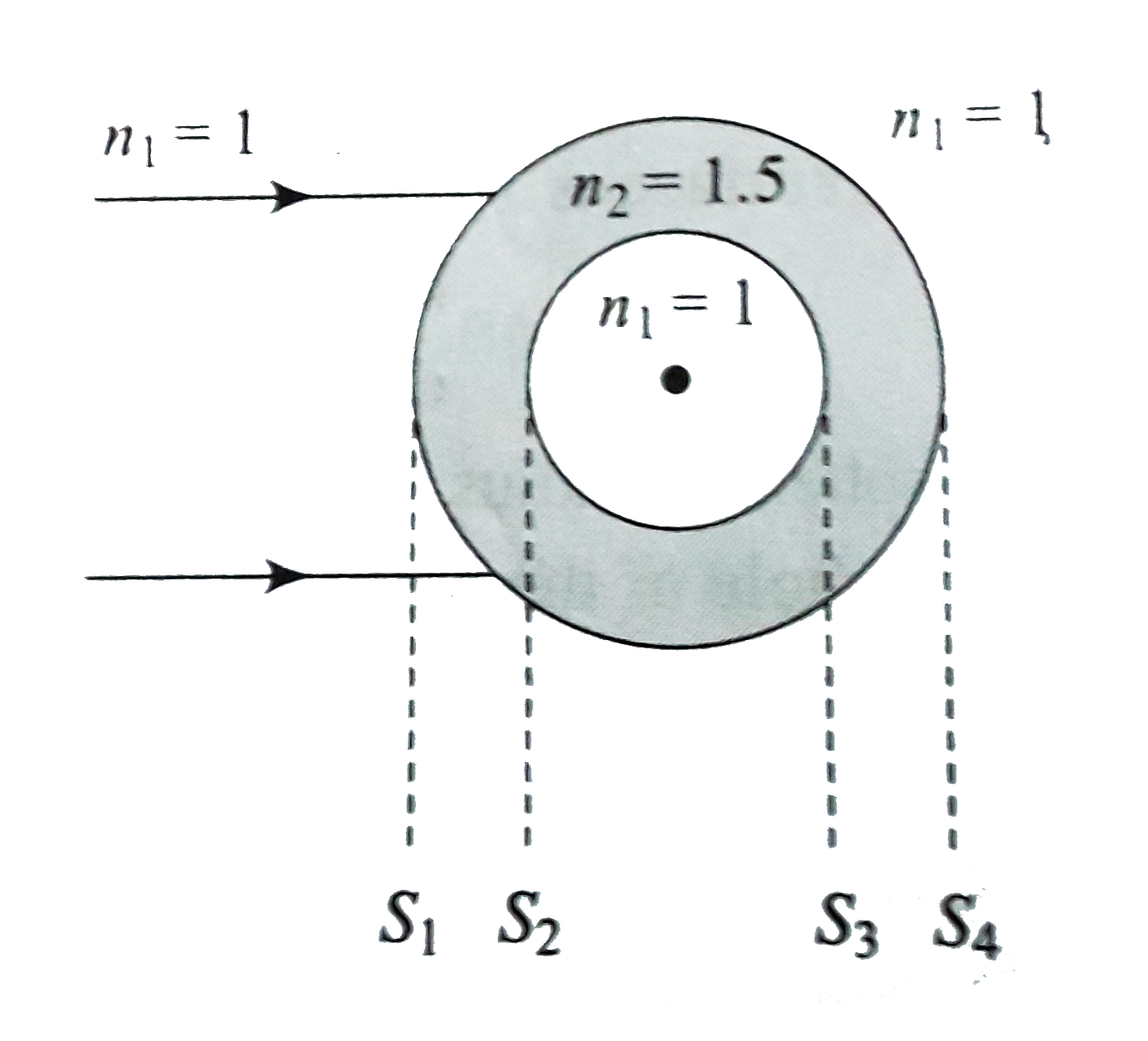 A25cm left of S4, virtualB25 cm right of S4 , realC15 cm left of S4, virtualD20cm right of S4, virtual
A25cm left of S4, virtualB25 cm right of S4 , realC15 cm left of S4, virtualD20cm right of S4, virtual
A glass sphere, refractive index 1.5 and radius 10cm, has a spherical cavity of radius 5cm concentric with it. A narrow beam of parallel light is directed into the sphere. Find the final image and its nature.

View SolutionA sphere of radius 2R and mas M has a spherical cavity of radius R as shown in the figure. Find the value of gravitational field at a point P at a distance of 6R from centre of the sphere.
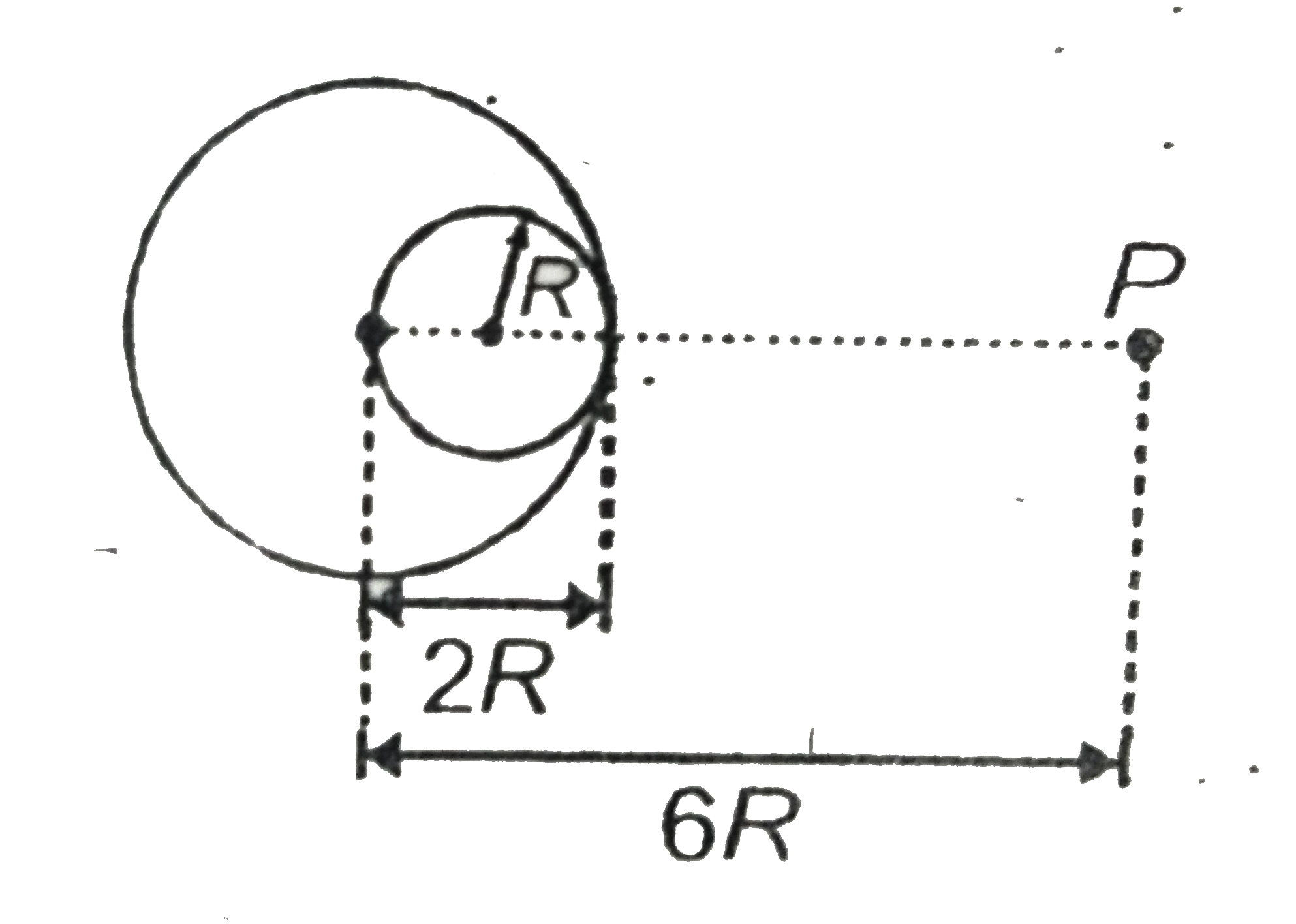
View SolutionA sphere of radius 2R and mas M has a spherical cavity of radius R as shown in the figure. Find the value of gravitational field at a point P at a distance of 6R from centre of the sphere.

View SolutionA solid spherical conductor of radius R has a spherical cavity of radius at its centre. A charge is kept at the centre. The charge at the inner surface, outer surface are respectively.
View SolutionA conducting sphere of radius R2 has a spherical cavity of radius R1 which is non concentric with the sphere. A point charge q1 is placed at a distance r from the centre of the cavity. For this arrangement, answer the following questions.
If q1 is shifted to the centre of the cavity, then: (choose the correct alternative)
View Solution

